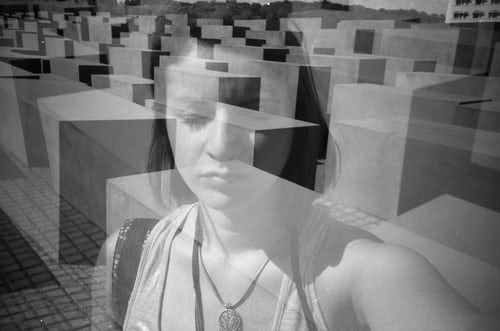
Photographic Memory: Fact or Fiction?
‘Photographic memory’ conjures up – fittingly enough – the image of a person who can retrieve, at will, information or facts as though they were looking at a photograph. For many people, especially students, such a talent offers the potential to achieve incredible academic feats. But as it turns out, memory is much more complex than the concept of a ‘photographic memory’ would lead us to believe.
So Do People With Photographic Memories Exist?
Anecdotally, we’ve probably all heard of someone with a ‘photographic memory.’ Perhaps you have a friend who rarely revises before exams but continually comes out with outstanding grades. Their ability is probably put down to them being ‘lucky,’ or them having a ‘photographic memory’ which enables them to retrieve any information they wish at will. In popular culture and history, there’s also evidence that some individuals possess extraordinary memories. For instance, in 2006, Akira Haraguchi, a retired Japanese engineer, recited 100,000 digits of pi from memory at a public event in Kisarazu.
Photographic Or Eidetic?
One explanation for such impressive feats of memory is that individuals possess eidetic memories rather than photographic ones. Eidetikers can reconstruct an image that they’ve seen with extreme accuracy, with an ‘impression’ of the image remaining visible to them for anything between thirty seconds and several minutes. The gold standard for assessing whether someone has an eidetic memory is the Photo elicitation method, where a person stares at an image for up to thirty seconds. The evaluator removes the image, and the individual is then asked to describe it in minute detail.
Eidetic memory, though rare, is a genuine phenomenon. The aforementioned Akira Haraguchi credits an eidetic memory, alongside his mnemonic system, with his success. Eidetic memory is also much more common in children, with an estimated 2-10% of children possessing this ability, but it typically fades during adolescence.
An Interesting Subject
Most of us have strong visual memories, but inter-connections and associations also improve our memory. I bet you can’t remember every meal you’ve had for the last seven days, but you might remember a dinner out you had on holiday seven years ago. How is this so? Your memory of dinner from seven years ago has so many other associations: the people you were with, the restaurant’s décor, the conversations you had, your other memories of that day. These interconnected memories make it much easier for you to relive and retrieve your memory of that dinner.
Former QI host, Stephen Fry, credits his curiosity with his extraordinary memory. It’s easy to see why. Think of something you’re interested in, be it football, song lyrics, art, or World War II – chances are you’re much better at recalling obscure and detailed facts about your favourite topic.
Real-Life Exceptions
Although scientists have only identified one hundred people in the world as having genuinely extraordinary memories, some remarkable real-life examples prove that super-human memory can and does exist.
Neuroscientist and memory researcher James McGaugh first identified a condition called ‘highly superior autobiographical memory’ (or HSAM) in the early 2000s, after a young woman named Jill Price reached out to him and his team at The University of California, Irvine. This woman claimed that she could remember every incident of her life since the age of twelve. Much to McGaugh and his team’s amazement, her claim proved correct. Following Jill’s story, several other HSAM’s came forward.
One similarity that unites HSAM’s is that their memories are all very self-centred, with subjects also scoring highly on ‘fantasy proneness’ and ‘absorption,’ the ability to immerse all their sense in any activity they partake in. Beyond this, researchers have failed to find any striking anatomical variations that could explain these astonishing individuals.
Why Anyone Can Develop A Great Memory
Whilst it’s easy to become envious of those who possess such incredible memories, it’s wise to remember that only a tiny percentage of the world’s population possess them. Even with those who do, it’s perfectly possible that they’ve developed it because of a particular behaviour or event in their past, rather than it being an innate ability.
Evidence of some memory techniques can be found as far back as 500 BC, with our ancestors creating and using them to sharpen their own recollection abilities. The Method of Loci, also known as ‘The Memory Palace,’ was utilised in Ancient Greece, for example. To use the method, you think of a familiar setting or journey – such as the walk from your home to the gym or the shops – and place facts, items, or dates along the way – ‘collecting’ them as you complete the journey in your mind. In 2011, journalist Joshua Foer wrote Moon Walking With Einstein, exploring how many ordinary people utilise mnemonic systems to become extraordinary, with some finding themselves competing in the US Memory Championship.
Whilst there’s no doubt there are a few individuals out there with unique memories, we shouldn’t let the idea of ‘photographic memories’ themselves make us feel inadequate. Photographic memory – like much of memory itself – has mostly been proven to be a fictitious concept.
